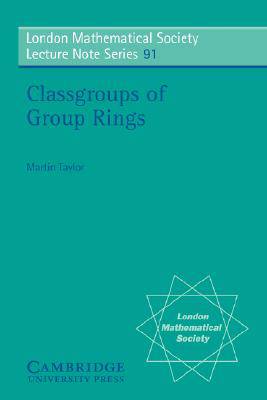
- Afhalen na 1 uur in een winkel met voorraad
- Gratis thuislevering in België vanaf € 30
- Ruim aanbod met 7 miljoen producten
- Afhalen na 1 uur in een winkel met voorraad
- Gratis thuislevering in België vanaf € 30
- Ruim aanbod met 7 miljoen producten
Zoeken
Omschrijving
This book is a self-contained account of the theory of classgroups of group rings. The guiding philosophy has been to describe all the basic properties of such classgroups in terms of character functions. This point of view is due to A. Frohlich and it achieves a considerable simplification and clarity over previous techniques. A main feature of the book is the introduction of the author's group logarithm, with numerous examples of its application. The main results dealt with are: Ullom's conjecture for Swan modules of p-groups; the self-duality theorem for rings of integers of tame extensions; the fixed-point theorem for determinants of group rings; the existence of Adams operations on classgroups. In addition, the author includes a number of calculations of classgroups of specific families of groups such as generalized dihedral groups, and quaternion and dihedral 2-groups. The work contained in this book should be readily accessible to any graduate student in pure mathematics who has taken a course in the representation theory of finite groups. It will also be of interest to number theorists and algebraic topologists.
Specificaties
Betrokkenen
- Auteur(s):
- Uitgeverij:
Inhoud
- Aantal bladzijden:
- 136
- Taal:
- Engels
- Reeks:
- Reeksnummer:
- nr. 91
Eigenschappen
- Productcode (EAN):
- 9780521278706
- Verschijningsdatum:
- 12/04/1984
- Uitvoering:
- Paperback
- Formaat:
- Trade paperback (VS)
- Afmetingen:
- 152 mm x 229 mm
- Gewicht:
- 208 g

Alleen bij Standaard Boekhandel
+ 144 punten op je klantenkaart van Standaard Boekhandel
Beoordelingen
We publiceren alleen reviews die voldoen aan de voorwaarden voor reviews. Bekijk onze voorwaarden voor reviews.








